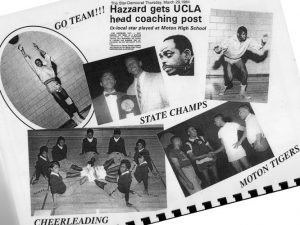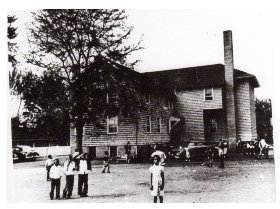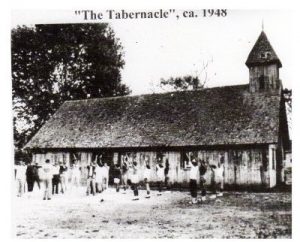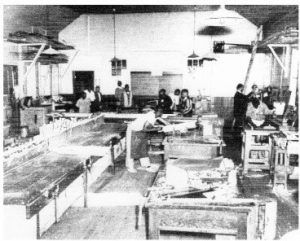The Moton High School Alumni Association in Easton, MD was reorganized under the present leadership in February 2001.
After electing officers, we developed the bylaws for this association. Two objectives were listed which are
- To foster the legacy perpetuated at Moton High School where all students matriculated.
- To provide awards and scholarships to deserving African American students who plan to further their education in their chosen career or profession.

Each year we have sponsored activities for all students who attended Moton to meet and greet their classmates and friends. These activities were planned for the purpose of raising funds to support our second objective. We have received funds from a couple of classes to help support our scholarship fund. They were the classes of 1956, 1960 and 1965. The American Legion has also been supportive of our efforts.
As of this date the Moton High School Alumni Association has accomplished the following
- Provided 8 students with book awards of $500.00 each totaling $4,000.00
- Provided 36 students with a $1,000.00 scholarships each totaling $36,000.00
- Provided $400.00 to assist a student with books.
- Made a donation of $100.00 to Waters United Methodist Church to assist them in replacing their heating system.
- Made a donation to the restoration of John Wesley Church in Oxford.
- Made a donation to Talbot County Public Schools on their laptop initiative.
- Made a donation to the Auxiliary of Blake Blackston Post to assist two students to attend Girl’s State.
- Purchased ads from the Talbot County Branch and other organization when requested.
- We received a plaque from Bethel A. M. E. Church in Easton , Maryland and Scotts United Methodist in Trappe, Md. for our support to students in the community for scholarships.
School History
The school was named after the great educator, Robert Russa Moton, whose history is depicted in this section of our website, Robert Russa Moton.
In the aftermath, of the Civil War, the federal Freedmen’s Bureau sponsored a school original schoolon Port Street for black children which would become the first black public school in Easton. The Talbot Board of County School Commissioners began administering its operations in 1870 by appointing a Board of Trustees and naming it the Easton Colored School. Two years later, the Maryland Assembly enacted the State School Law of 1872 which obligated the counties to provide equal provisions for black and white schools. This law was one of many segregation or Jim Crow laws passed in the South during the Reconstruction Period. They enforced strict separation of races while appearing to protect the rights of blacks guaranteed by the Fourteenth Amendment to the Constitution. In 1896 the United States Supreme Court upheld a Louisiana segregation law in Plessy v. Ferguson, thereby affirming the separate but equal doctrine.

Social and Economic progression
The conditions were not equal between white and black schools. In 1916, the State Educational Survey Commission reported that the Port Street School was one of the poorest buildings in the state. That year a delegation from the Easton Colored School appeared before the Board of County School Commissioners and presented a plan to raise $1000 to aid in the erection of a new building. Following several delays, construction began in 1918 and the new building was dedicated on Friday, February 21, 1919.
Our name, our pride
On November 21, 1937, the Easton Colored School was renamed and dedicated in honor of Robert Russa Moton. “ Ole Moton ‘ now consisted of five buildings on Port Street and one on Higgins. They housed an elementary school, high school, industrial arts facility, and home cottage.
After building a new school on Glenwood Avenue in 1953, the Board of Education closed the Port Street School. The property was sold in 1959.

Located on Higgins Street behind the Asbury M. E. Church, “ The Tabernacle” served as the Moton gymnasium. Its dilapidated condition illustrates the inferior facilities provided for the County’s black students. Despite inferior athletic facilities, Moton athletes excelled in competition. Many of the teams won state championships, like the 1946 soccer team.
Vocational education was an important part of the Moton curriculum. Shown here is vocational education the interior of the industrial arts shop, which was located about 1 1/2 blocks from the main building on Port Street.
Overcrowded classrooms and insufficient textbooks at Moton illustrated the inequities between black and white schools in a segregated system.

Annual N.F.A and N.H.A Fair
The annual N. F. A. and N.H.A. Fair sponsored by the Agriculture and Home Economics Departments was a popular event that attracted students, parents, and other members of the community. Each year the New Farmers of America and the New Homemakers of America erected exhibits and competed for prizes donated by businessmen of Easton and Talbot County as well as the State Fair Board. Exhibits from the Home Economics Department included canned goods, pastries, needlework, floral arrangements, and crafts. The Agriculture Department exhibited poultry, eggs, fruits, vegetables, livestock, and field crops. In addition, the two groups presented a program in conjunction with the Fair that featured lectures on such topics as “ Modern Procedures for Freezing Fruits and Vegetables.”
Overcoming trails to establish School
The Robert Russa Moton Junior/senior High School on Glenwood Avenue opened in 1953. This school was dedicated on Sunday, November 15, 1953. One year later, the United States Supreme Court handed down the landmark Brown v. Board of Education decision asserting the unconstitutionality of racial segregation. In response, Talbot County gave black students “free-choice” to attend formerly all white schools. But few did and Moton continued to operate as an all black school until 1967 when the Talbot County system was fully integrated. For the next two years, the building housed the Easton Middle School. It was then closed for renovations and reopened in 1972 as the Talbot County Vocational –Technical Center under the direction of Theodore J. Henson, a former Moton teacher. The building then became the Glenwood Intermediate School. However, due to overcrowding problems, the building underwent extensive renovations beginning in 1990. In 1991 it opened as the Easton Elementary School.
Athletics at Moton
Athletics played an important role at Robert Russa Moton junior/Senior High School, teaching discipline, teamwork, and the value of fair and honest competition. Athletes excelled in volleyball, baseball, field hockey, track and field, cross-country. However, the most successful team was boy’s basketball. Between 1953 and 1967 the Moton Tigers won five state and nine district championships.
Direction for the basketball team came from two outstanding coaches: Marion J. Waller and Roger Bryan. Waller, a coach until 1955, amassed a record of 121 wins, district championships, one state championship, and only 27 losses in seven years. Coach Bryan succeeded Waller and remained until the school closed in 1967. Coach Bryan filled his players with desire to win, but equally important, stressed the importance of athletics.
Two players from Moton pursued basketball professionally. Walt Hazzard played for the Los Angeles Lakers and Richard Milbourne was drafted by the Detroit Pistons. In addition several players went on to become coaches and teachers, underscoring the influence of an athletic program which inspired pride in self, school, and community.
Pioneer staff
The accomplishments of Moton’s students pay tribute to the commitment of the school staff a commitment that was epitomized by the dedication of William H. Fauntleroy and Mrs. Ruth Early.
Mr. Fauntleroy was a devoted educator who began his teaching in Talbot County in 1926. Before retiring in 1969, he had served as teacher, elementary school principal, supervisor of Colored Schools, and principal of Moton and Easton High Schools and taught courses in African-American studies and general history. The leadership inspired hard work and pride in the faculty as well as students.
The importance of Education
Moton provided students with a solid academic foundation while offering diverse extracurricular activities. Besides athletics, students joined the Band, Glee Club, New Farmers of America, New Homemakers of America to name a few. Moton scholars participated in job fairs, conferences on professional training, and state and nationwide contests such as Voice of Democracy. In 1959 a chapter of the National Honor Society was formed at Moton, Many graduates attended institutions of higher education including Maryland State College, Bowie State College, Morgan State College, Hampton Institute, and Tuskegee Institute. Other graduates entered the armed forces or applied skills to jobs in the community.
Executive Board
Robert Russa Moton High School Alumni Association
Executive
president : Gladys Holiday Giddens
Vice president : David Chase
Secretary : Jacqueline Adams Greene
Treasurer : Dorothy Holliday Palmer
Chaplain : Joseph Miller
Historian : James Kenny Camper
Activity Comittees
Hilber Turner, Chair
Jacqueline Greene
Janet Jenkins
Doreatha raisin
Walter Rasin
Fundraising
David Chase, Chair
Lawrence Holliday
Scholarship
Bobby Blake, Chair
Larrier Walker
Vastine Holliday
Walter Black
Francis Feagins
Sunshine
Vastine Holliday
Mary Brooks
Jacqueline Greene